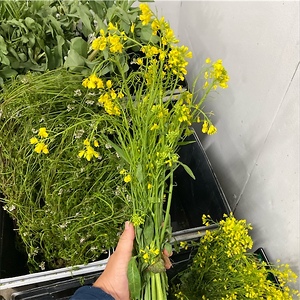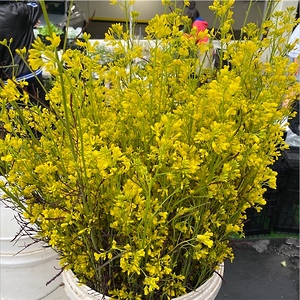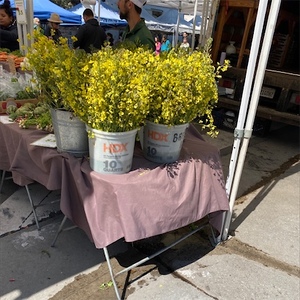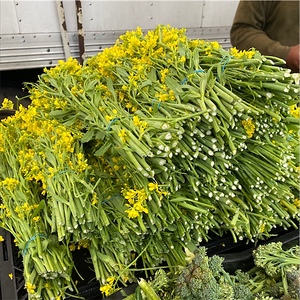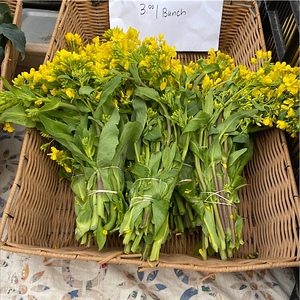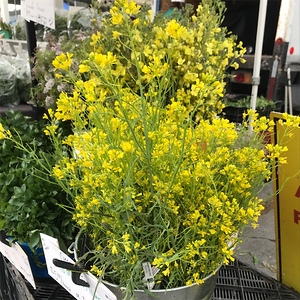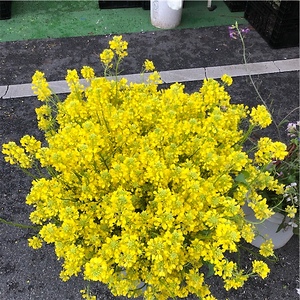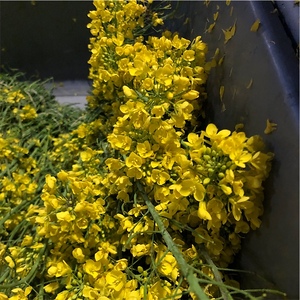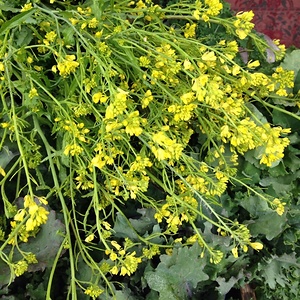

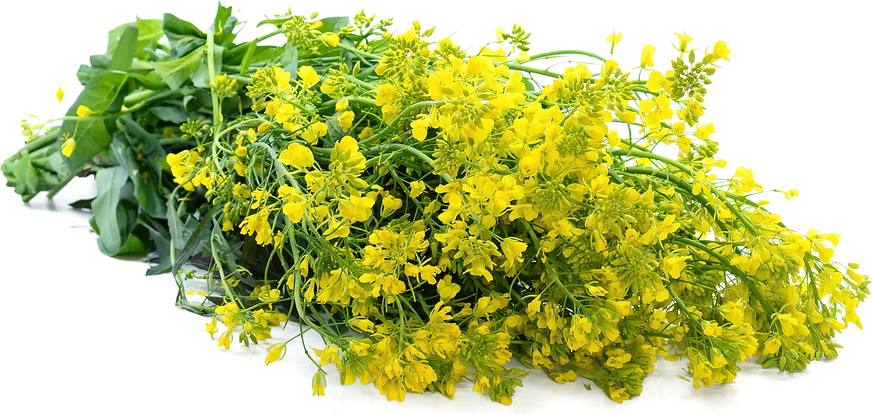
Mustard Flowers
Estimated Inventory, 50 ct : 0
| Fresh Origins | Homepage |
Description/Taste
Mustard flowers are tiny, measuring 1 to 2 centimeters in diameter, and bloom in a cluster known as an umbel. The blossoms feature four bright yellow and oval-shaped petals surrounding a central core with one yellow pistil and four to six shorter yellow stamens. The flowers are attached to long, green stems that vary from succulent to woody depending on the maturity of the blooms that feature green deeply lobed leaves of varying sizes. Mustard flowers are delicate and bruise easily, releasing a pungent mustardy aroma. The flowers are bitter and vegetal with a piquant and peppery finish.
Seasons/Availability
Mustard flowers are available year-round, with a peak season in autumn.
Current Facts
Mustard flowers grow atop long bolted stems of a leafy shrub known as mustard. All mustard plants are members of the Brassicaceae family and are closely related to cabbage, kale, turnips, and cauliflower. Eleven mustard varieties are found throughout the world, and depending on the variety, they are grown for their large leafy greens or the spicy seed it produces. The two main cultivated varieties of mustard are white or yellow mustard, botanically classified as Sinapis alba, and brown mustard, botanically classified as Brassica juncea. The descriptors white, yellow, and brown in the flower's moniker refers to the color of the seeds produced by the plant. These seeds are commercially produced on a large scale in many parts of the world and can be used whole, made into a paste, ground into a spice, or pressed into oil. Both cultivated varieties produce deeply lobed, hearty green leaves and small yellow, cross-shaped flowers, although the leaves of the brown mustard are much larger than white mustard and are more commonly harvested as a vegetable. These leaves are often just a farming bi-product because once the plant begins to bloom, many farmers abandon leaf harvest to allow the plant to put all its energy into seed production. However, many small and specialty farmers will harvest and sell the flowers instead of waiting for the seed pods to develop. Charlock or wild mustard, a relative of white mustard, can be found growing wild in many parts of the world. This variety is more often foraged than cultivated and is considered an invasive species in some regions and a bit of a nuisance as it can make some livestock sick when consumed.
Nutritional Value
Once the mustard plant bolts, the nutritional value of the plant decreases; however, Mustard flowers will have a similar nutritional makeup to the leaves. Mustard greens contain significant levels of vitamin C, a micronutrient that supports the body’s immune system and collagen production. The greens also contain high amounts of vitamin K, which is a necessary component of blood clotting. The flowers contain antioxidants that can help eliminate free radicals, calcium to support bone growth, and lower amounts of vitamin A, potassium, magnesium, and phosphorus.
Applications
Mustard flowers have a sweet, vegetal, and piquant flavor suited for fresh and cooked preparations. The flowers are traditionally used when they are just emerging from the buds and are treated like an edible garnish, added at the end of the cooking process to prevent wilting. Mustard flowers can be sprinkled over salads, stirred into pasta, used as a garnish over appetizers, lightly pressed into soft cheeses, or folded into dips. The blossoms can also be floated over soups, incorporated into fresh spring rolls, mixed into stir-fries, noodle dishes, and rice, or placed on top of sushi and other seafood dishes. The flowers are sometimes baked into casseroles, quiches, and macaroni and cheese, or used in various pickled preparations. Beyond fresh flowers, Mustard flowers can be dried and used as a seasoning, similar to mustard powder. Mustard flowers pair well with herbs such as parsley, basil, lemongrass, and mint, spices such as cumin, fennel, coriander, and citrus, especially tangerine, grapefruit, and lime. The delicate blooms should be immediately consumed for the best quality and flavor and will only keep for 1 to 2 days when stored in a container in the refrigerator.
Ethnic/Cultural Info
In the spring, a yellow sea of wild mustard flowers blankets California, reaching from San Diego north to Sonoma. Legend has it that Father Junipero Serra, the founder of the California missions, and other Spanish padres brought the seeds from Spain to what is now Mexico and California. As the Catholic missionaries traveled north along the California coast, they scattered the seeds hoping to create a golden path between the missions. When the explorers returned in the spring, they were met with a golden ribbon of flowers. Today, wild mustard can be found throughout California during the spring. There are no natural predators for the Mediterranean plant, which has led to the wild plant becoming an invasive species in the region. Nevertheless, the spring blooms are stunning and are celebrated in Napa Valley during the annual Napa Valley Mustard Celebration. Locals and tourists are invited to visit the valley and take in the blossoms while hiking, shopping, and wine tasting. Artists can be found painting in beautiful, golden landscapes, hot air balloons can be seen dotting the horizon at sunset, and in recent years the countryside has become a photography destination due to the blooms exposure on social media led by the wild mustard days hashtag. The mustard flower celebration runs from January to March, signaling the awakening of the landscape and the beginning of the growing season for local vineyards and farms.
Geography/History
White mustard is believed by experts to be native to the Mediterranean region, where it has grown wild since ancient times, and brown mustard is native to the Himalayan regions of Nepal and India. The earliest recorded use of mustard as a spice dates back to Indian and Sumerian texts from around 3,000 BCE. Mustard was also used by Ancient Romans and Greeks as a spice and medicinal plant. The seeds of both types of mustard were traded along well-known trading routes into Asia and Africa. By the 10th century, Romans had spread the plant throughout Germany and France and later as far north as England. Historians believe the seeds were brought to North and South America by European colonists, while others believe the seeds may have been brought over accidentally in the hair of livestock and attached to clothing. Either way, the seeds naturalized in the temperate climates of North America, especially in California. Today, mustard is grown in temperate regions worldwide, including the plains of Canada and the United States, Hungary, Nepal, India, and Great Britain. Mustard flowers are a specialty item that can be found growing wild during the spring, or they can be found at specialty and farmer's markets during the season.
Recipe Ideas
Recipes that include Mustard Flowers. One
| French Foodie Baby |
|
Asparagus, Arugula, Avocado Soup with Wild Mustard Flowers |



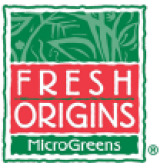
 Learn More...
Learn More...